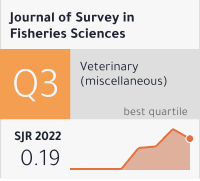Effect of Cyclic Heat Treatment on Microstructure and Mechanical Properties of Plain Carbon Steel
DOI:
https://doi.org/10.53555/sfs.v10i4.3552Keywords:
Cyclic Heat Treatment, Plain Carbon Steel, Microstructure, Mechanical Properties, Martensitic TransformationAbstract
Plain carbon steel specimens were subjected to cyclic heat treatment (CHT) involving multiple austenitization and air-cooling cycles to investigate improvements in mechanical properties. Varying the number of cycles (0, 2, 4, 6) led to progressive microstructural refinement from an initial ferrite–pearlite structure to a predominantly martensitic–bainitic matrix with dispersed nano-sized cementite. Consequently, significant enhancements in hardness (from 220 HV to 640 HV) and tensile strength (680 MPa to 1540 MPa) were achieved, representing increases of ~200% and 126%, respectively. Flexural strength and Young’s modulus also rose (from 550 MPa to 1120 MPa, and 190 GPa to 235 GPa) with additional cycles. However, the higher martensite content caused ductility and impact toughness to decrease (elongation fell from 18% to 10%, Charpy impact energy from 80 J to 35 J). Microstructural analysis reveals that each CHT cycle refines grain size (from ~12.5 µm to ~5.4 µm) and promotes phase transformations that underpin the improved mechanical performance. These results demonstrate that cyclic heat treatment is an effective, scalable approach to significantly enhance the strength and hardness of plain carbon steel through microstructure engineering, albeit with a trade-off in ductility and toughness.









